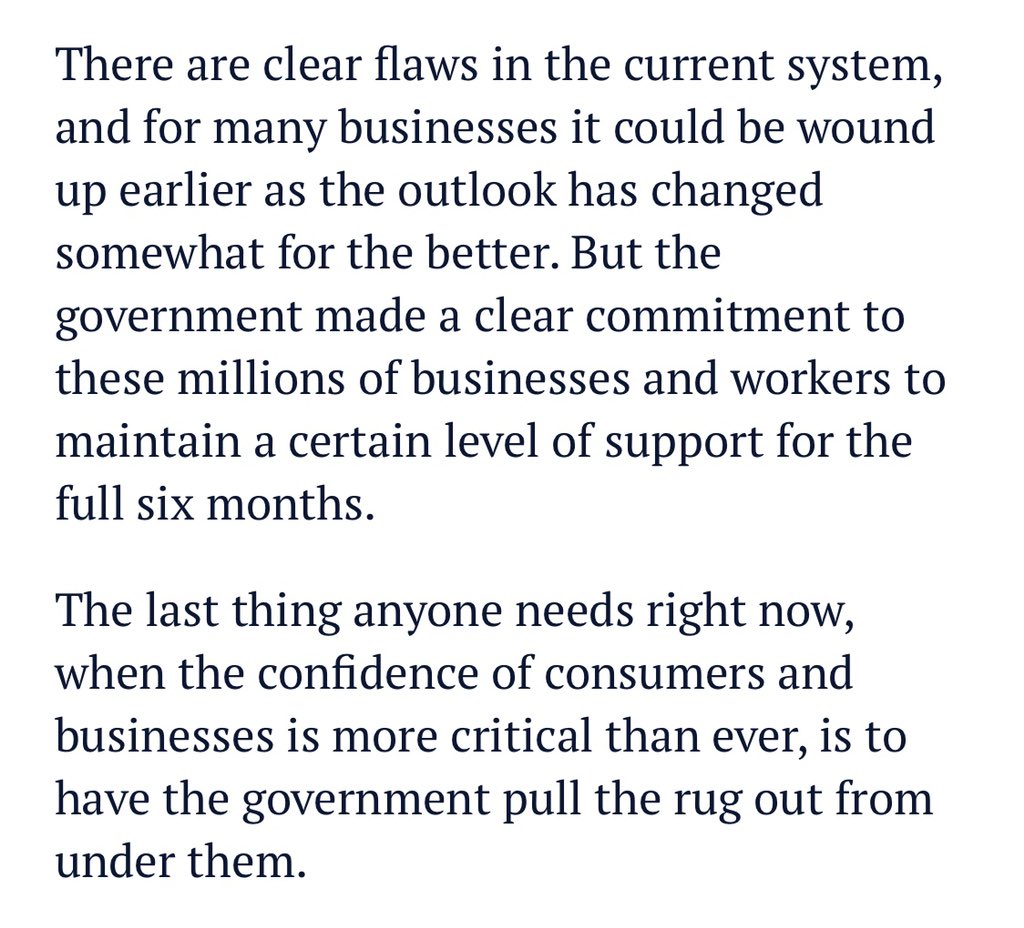I have a piece out in the @smh and @theage on JobKeeper given reports the government may wind it up early. It’s not clear it’s feasible or advisable to unscramble the egg at this stage. But another idea I had, not in the article, is in a thread below. 1/9
https://www.smh.com.au/national/scheme-is-flawed-but-jobkeeper-promises-need-to-be-honoured-20200515-p54tcd.html">https://www.smh.com.au/national/...
https://www.smh.com.au/national/scheme-is-flawed-but-jobkeeper-promises-need-to-be-honoured-20200515-p54tcd.html">https://www.smh.com.au/national/...
One thing I learnt from reading the JK regs is firms with >$20m in turnover simply need to tell the ATO once that they *expect* revenue to fall by 30% over the next month. Whether or not it does in that month or any subsequent month, they get to keep the subsidy for 6 months. 2/9
This is crazy for several reasons. One, which I mention in the article, is it’s impossible to police expectations. It’s easy to say the news scared you into thinking revenue would fall in the next month. It’s easy to delay sales of course but you don’t even need to do that. 3/9
The other issue is the system has no flexibility to wind up automatically for a firm if things turn out better than expected, as they in fact have for many. One obvious solution I have proposed and I mentioned in the article is to cap profit with JK at last year’s level. 4/9
But there’s an even better way. The turnover test is done once and is valid for the entire 6 months. Nevertheless, to receive JK firms still have to report every month to the ATO their revenue and expectation of revenue next month. That doesn’t affect their payment, though. 5/9
The way it should have been designed is for this declaration to affect the payment in the next month. That is, for the turnover test to apply every month, not just at the beginning of the 6 months. There’s no additional admin burden because firms are asked to do this anyway. 6/9
This would mean that if firms were seeing business pick up, JobKeeper would automatically be phased out. You could even fine-tune so they receive half the subsidy if revenue is down by 15% for example. If conditions worsen down the track, they could reapply. Max flexibility. 7/9
This would be simple to implement. You’d only be taking away money from firms who by definition no longer need it. The savings could be used to make the subsidy more generous for those who do need it. It would get rid of the cliff, and it could be extended beyond 6 months. 8/9
Now, should the government do this? As I say in the article, it’s not clear. JK was announced in March. Firms may have made irreversible investments based on it. And the economy doesn’t need any added tumult. But if they are going to do something, this is what they should do. 9/9

 Read on Twitter
Read on Twitter


